Abstract
Rats were trained to respond on a lever adjacent to a sounding speaker (the sound source) when a single click was emitted. A second click (the artificial echo) was presented through a second speaker on the opposite side. In Condition I, the echo (equal in intensity to the source) was delayed from .015 to 32 milliseconds; greater than 75% correct responses were given for delay times between about .040 milliseconds (lower threshold) and 8 milliseconds (upper threshold). In Condition II, the echo (simultaneous with the source) was reduced in intensity relative to the source over a range from 2.5 decibels to 40 decibels; greater than 75% correct responses occurred for intensity reductions greater than 5 decibels. In Condition III, both the intensity and the delay time of the echo were manipulated in a manner analogous to that which would occur under natural conditions; greater than 95% correct responses were given for delay times from 1 to 32 milliseconds. These data indicate that both time and intensity differences are necessary for localization of primary sources, with delay time contributing more at short echo path distances, and intensity differences at long distances.
Full text
PDF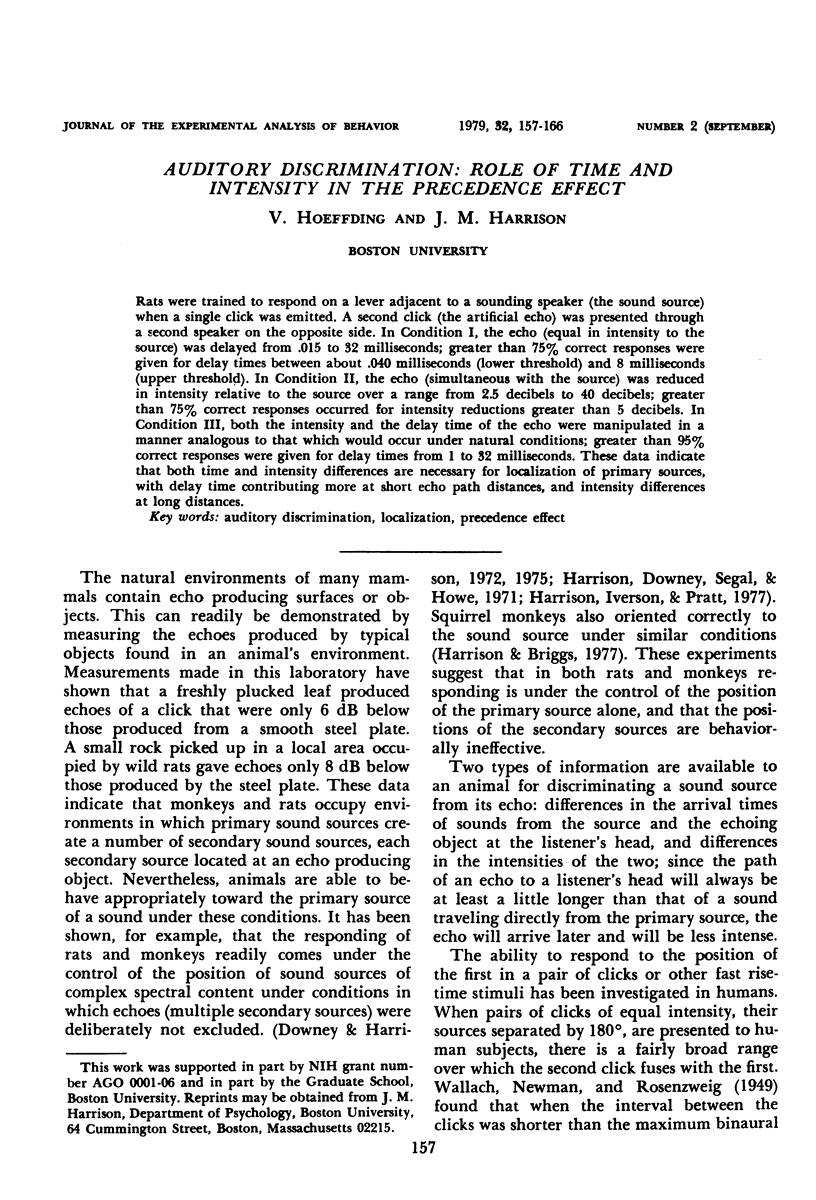
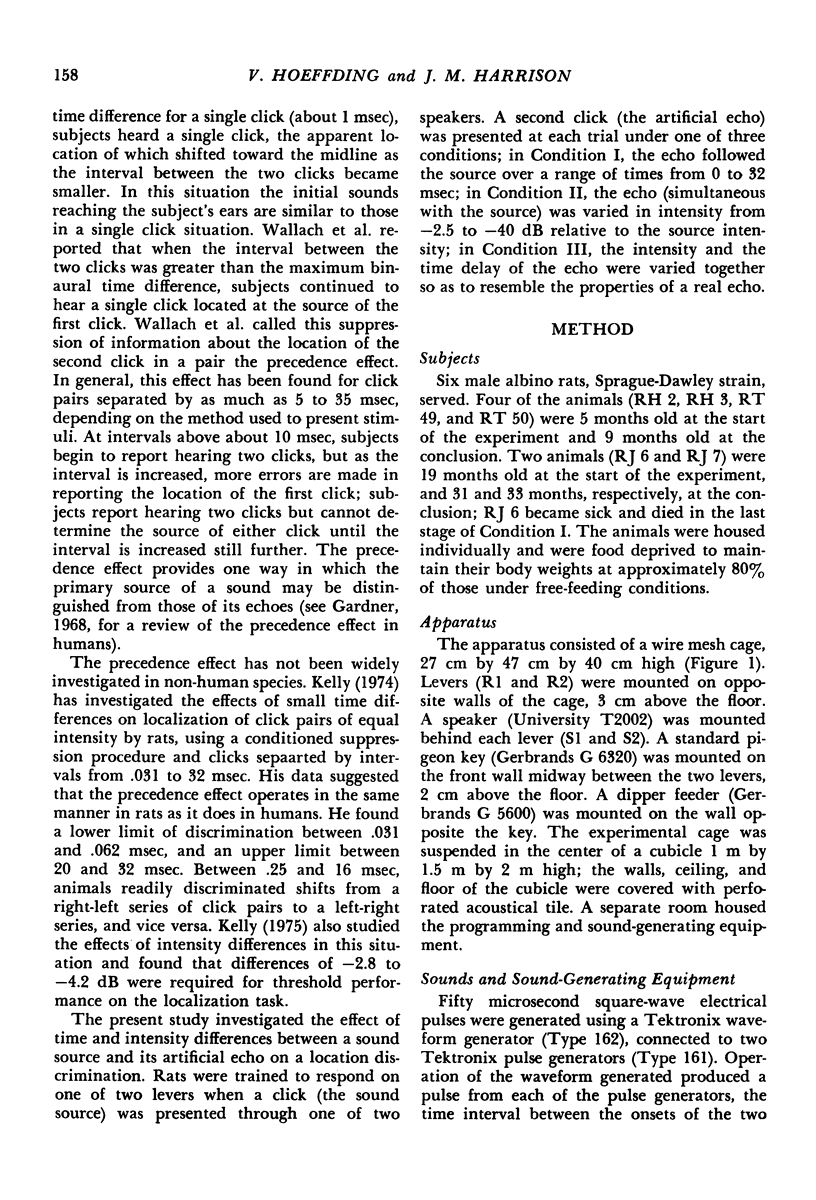
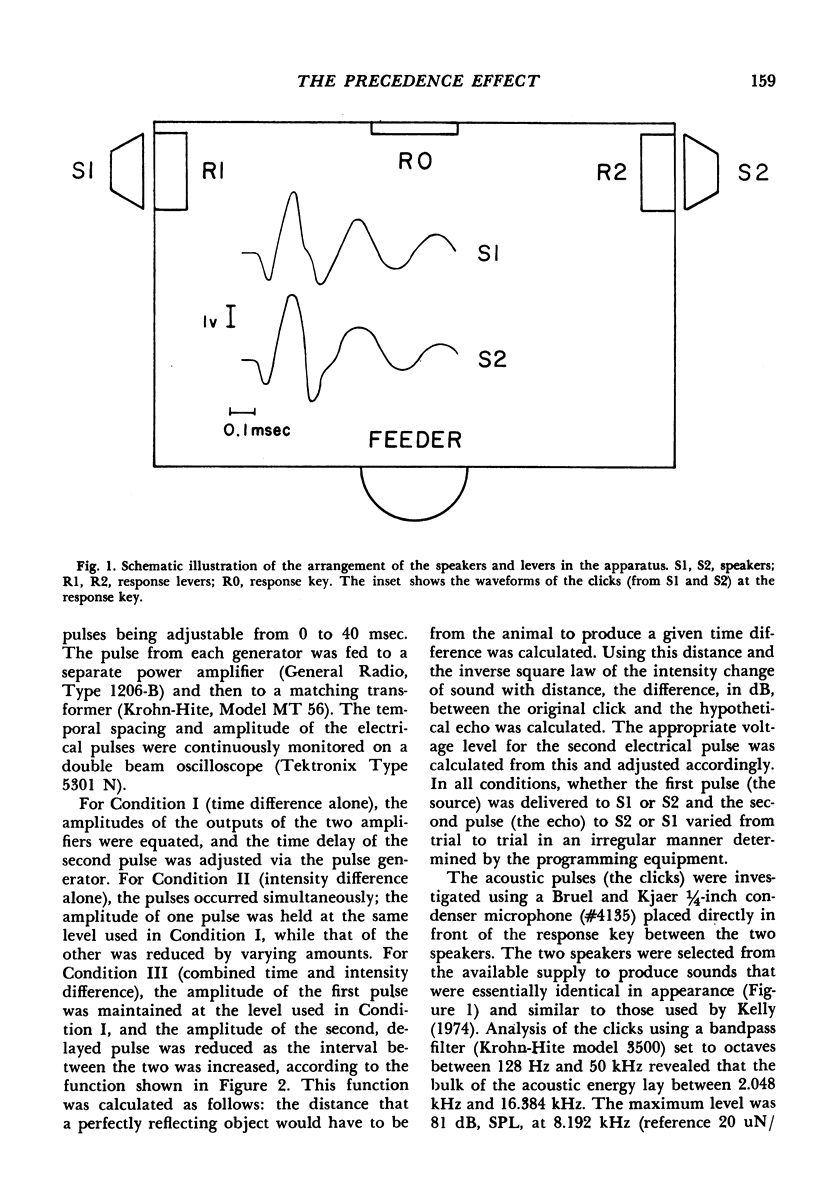
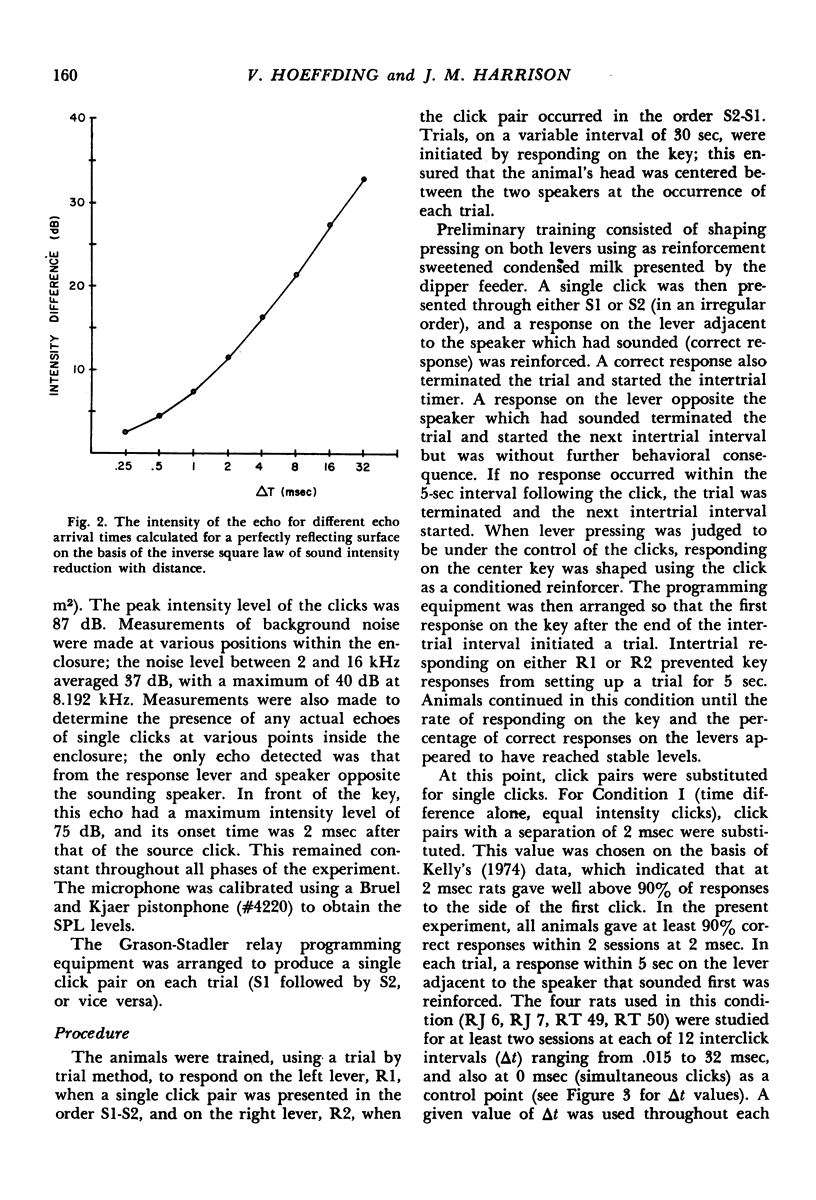
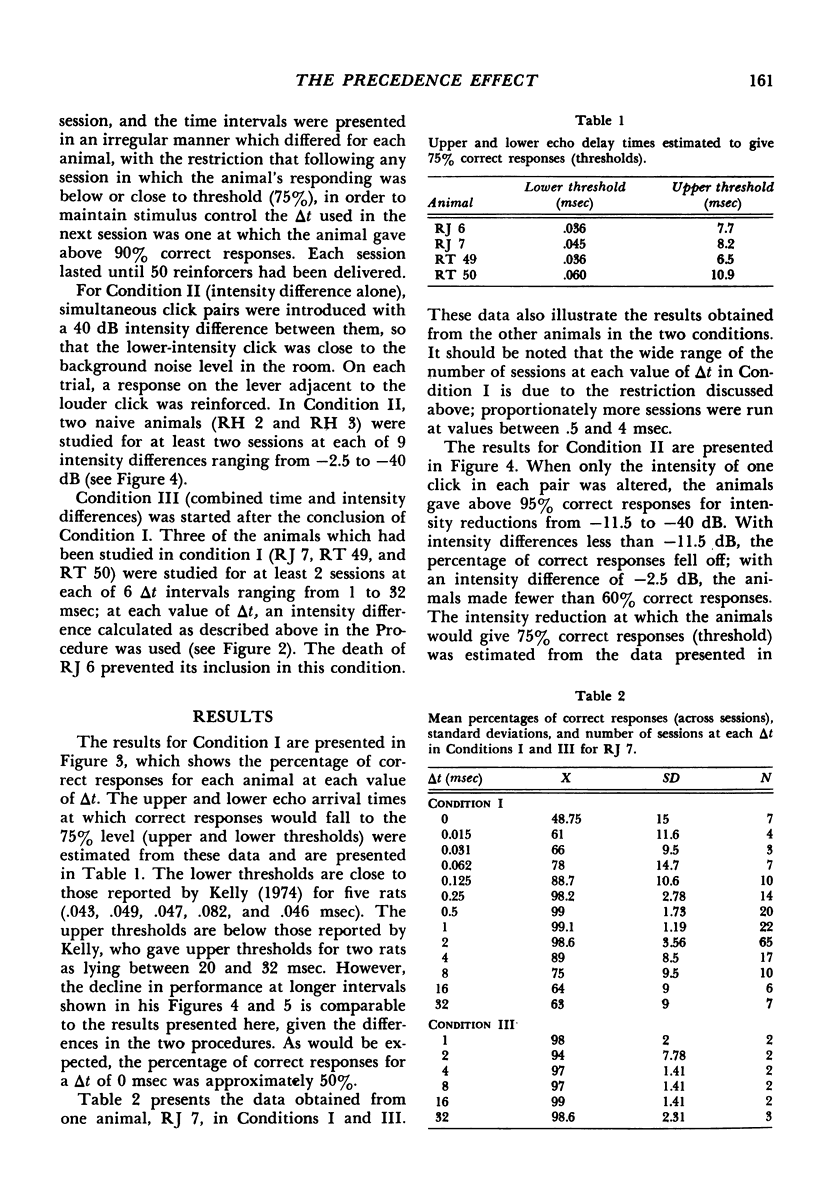
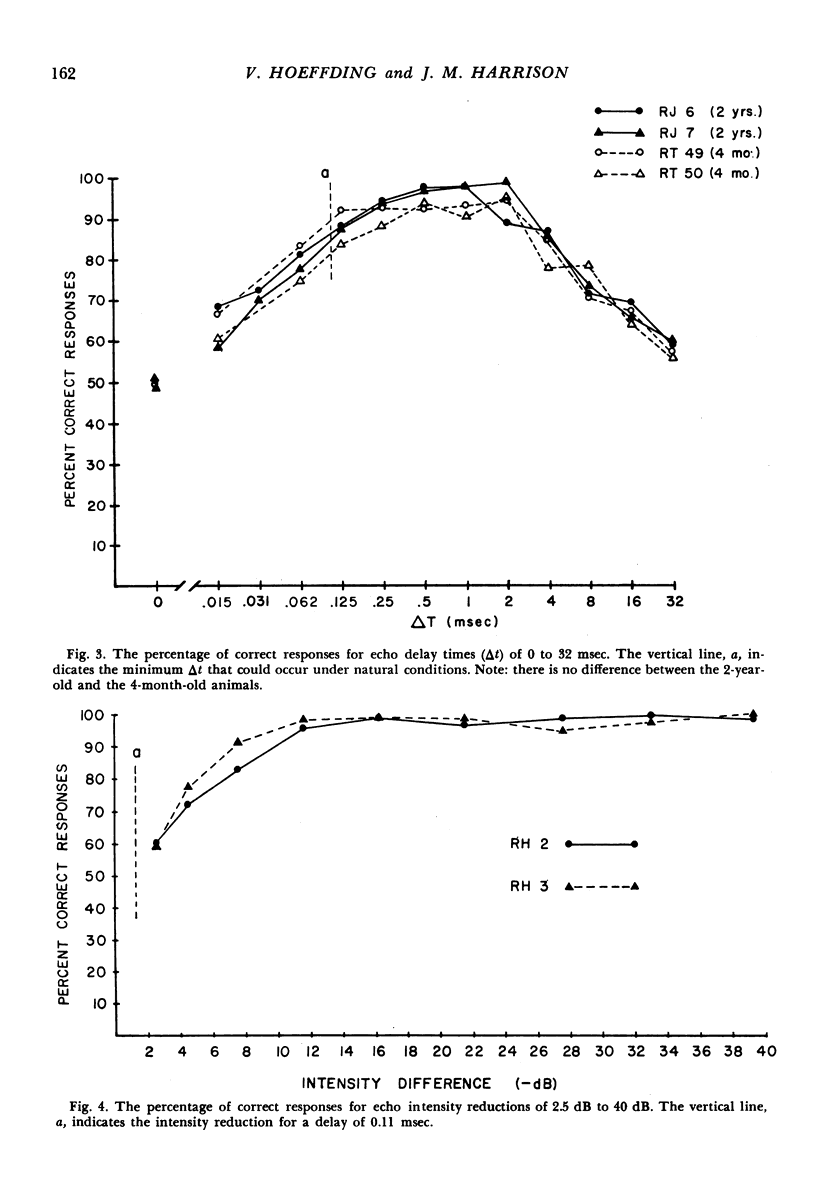
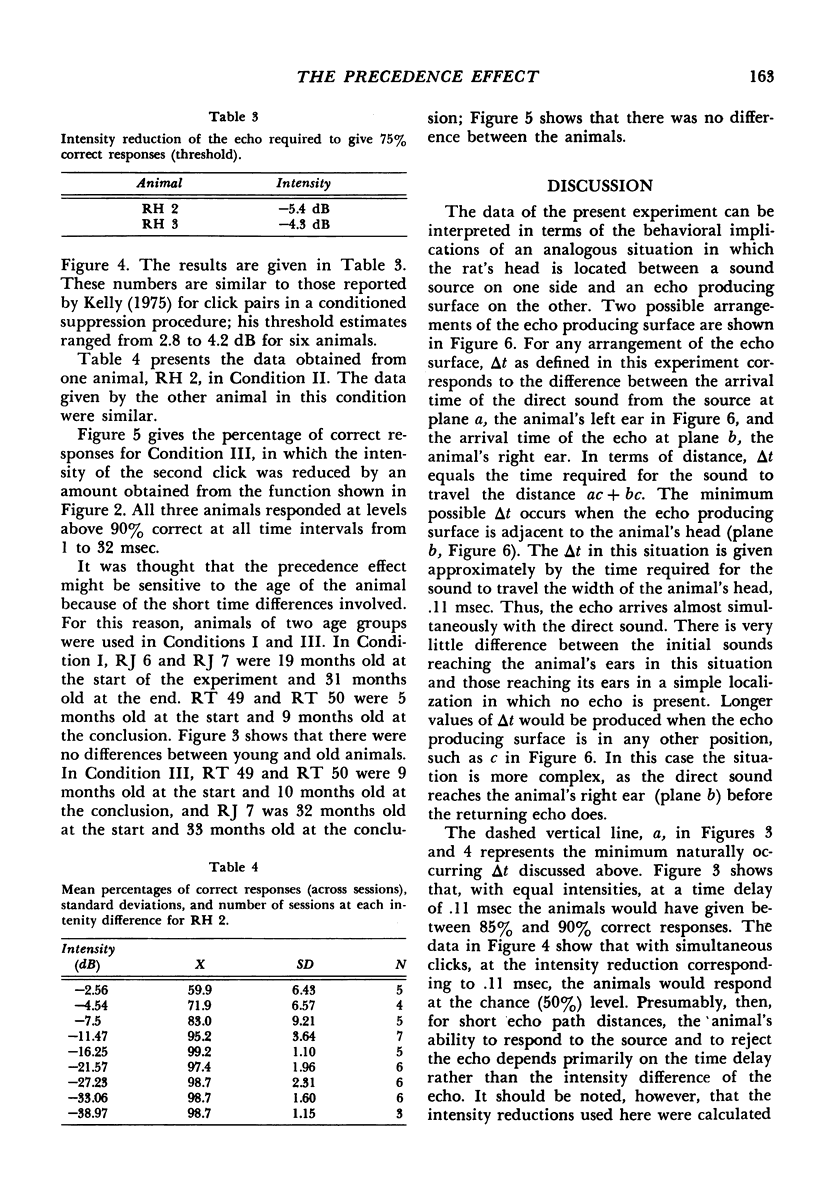
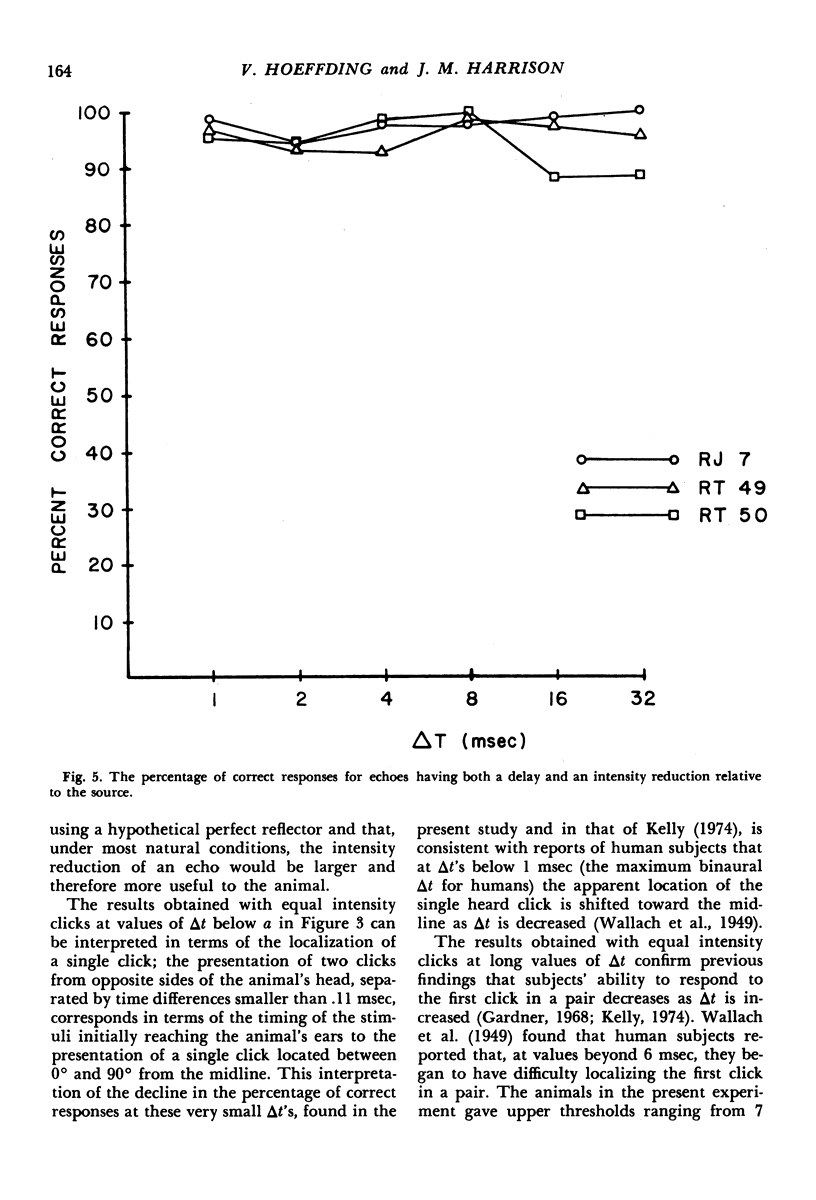
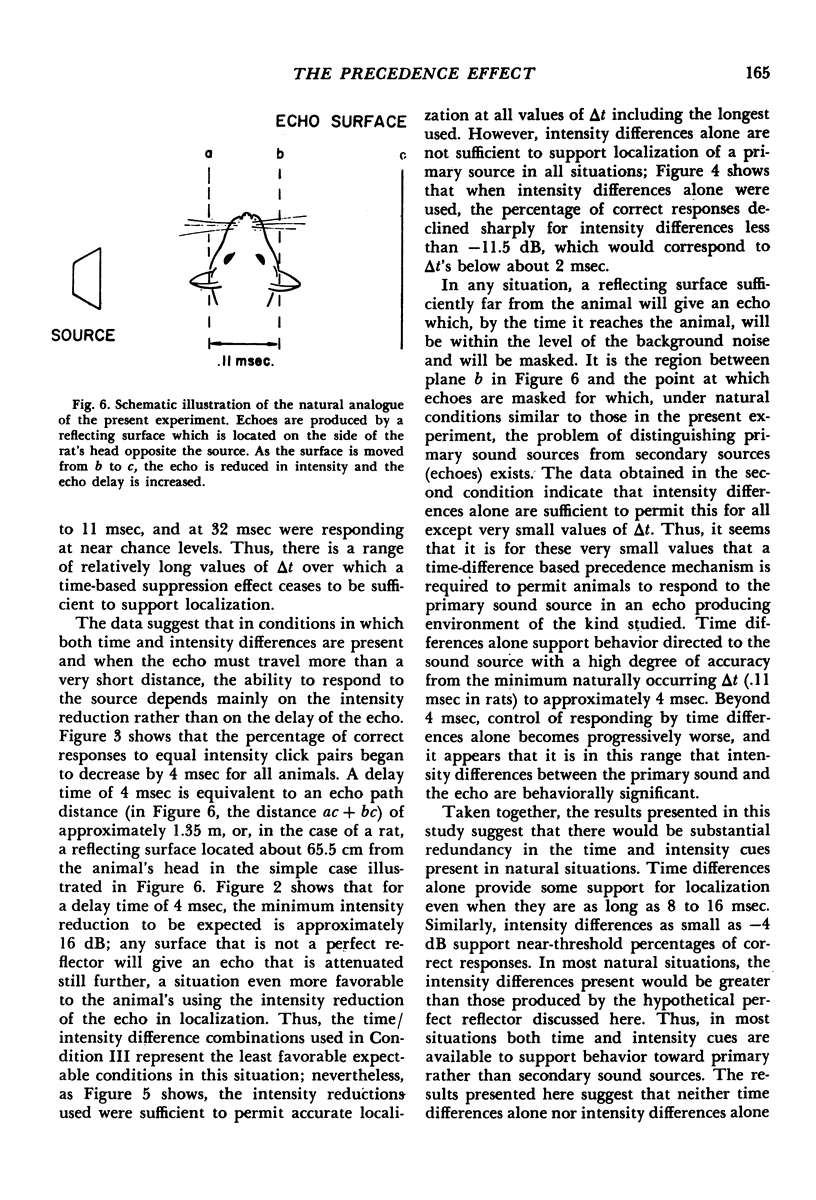
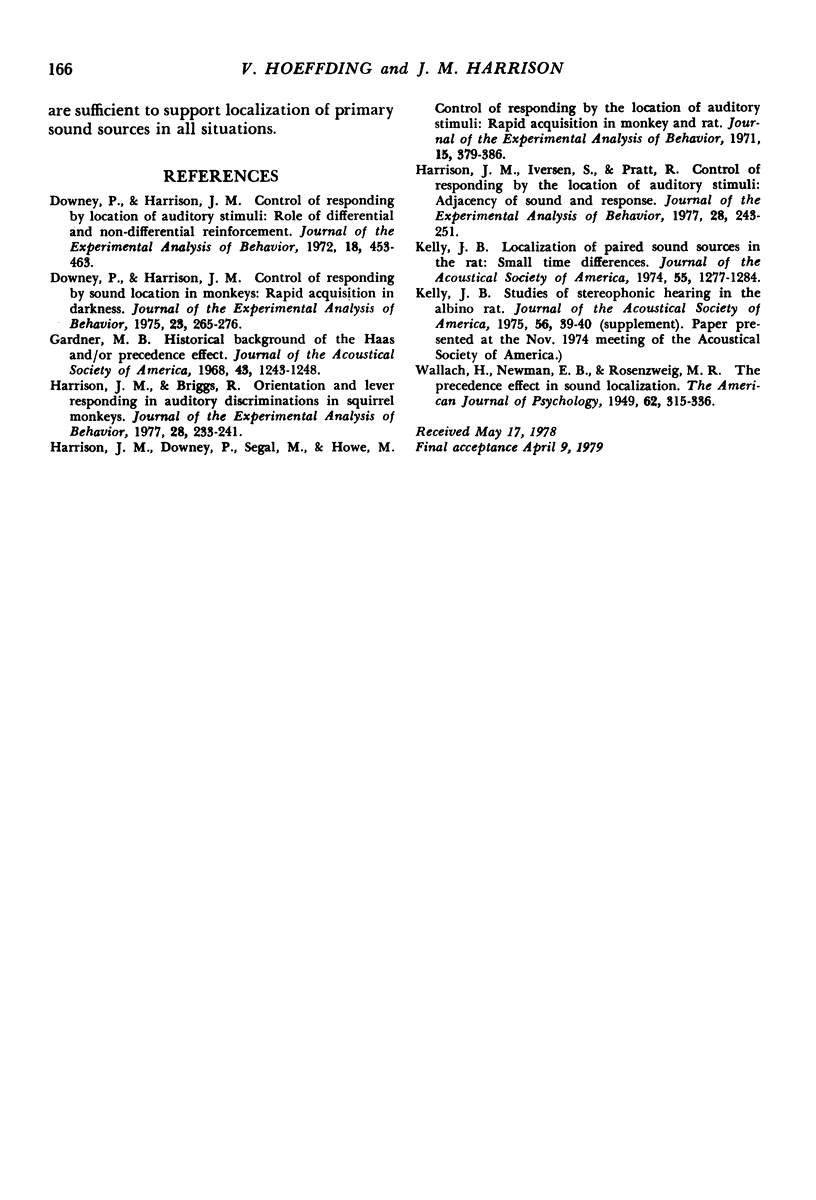
Selected References
These references are in PubMed. This may not be the complete list of references from this article.
- Downey P., Harrison J. M. Control of responding by location of auditory stimuli: role of differential and non-differential reinforcement. J Exp Anal Behav. 1972 Nov;18(3):453–463. doi: 10.1901/jeab.1972.18-453. [DOI] [PMC free article] [PubMed] [Google Scholar]
- Downey P., Harrison J. M. Control of responding by sound location in monkeys: rapid acquisition in darkness. J Exp Anal Behav. 1975 Mar;23(2):265–269. doi: 10.1901/jeab.1975.23-265. [DOI] [PMC free article] [PubMed] [Google Scholar]
- Gardner M. B. Historical background of the Haas and-or precedence effect. J Acoust Soc Am. 1968 Jun;43(6):1243–1248. doi: 10.1121/1.1910974. [DOI] [PubMed] [Google Scholar]
- Harrison J. M., Briggs R. M. Orientation and lever responding in auditory discriminations in squirrel monkeys. J Exp Anal Behav. 1977 Nov;28(3):233–241. doi: 10.1901/jeab.1977.28-233. [DOI] [PMC free article] [PubMed] [Google Scholar]
- Harrison J. M., Downey P., Segal M., Howe M. Control of responding by location of auditory stimuli: rapid acquisition in monkey and rat. J Exp Anal Behav. 1971 May;15(3):379–386. doi: 10.1901/jeab.1971.15-379. [DOI] [PMC free article] [PubMed] [Google Scholar]
- Harrison J. M., Iversen S. D., Pratt S. R. Control of responding by location of auditory stimuli: adjacency of sound and response. J Exp Anal Behav. 1977 Nov;28(3):243–251. doi: 10.1901/jeab.1977.28-243. [DOI] [PMC free article] [PubMed] [Google Scholar]
- Kelly J. B. Localization of paired sound sources in the rat: small time differences. J Acoust Soc Am. 1974 Jun;55(6):1277–1284. doi: 10.1121/1.1914697. [DOI] [PubMed] [Google Scholar]


